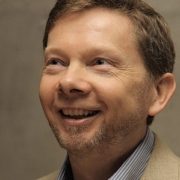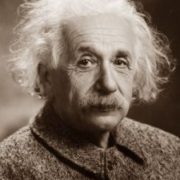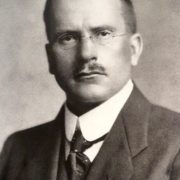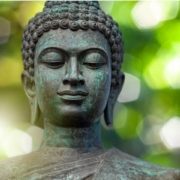
“The next step in human evolution is to transcend thought. This is now our urgent task. It doesn’t mean not to think anymore, but simply not to be completely identified with thought, possessed by thought.”
Creating A Better World
Aloha!
It’s been a minute since my last newsletter – my apologies to anyone who has been waiting.
In the time since December’s newsletter, I spent five weeks in San Francisco visiting friends and wanting to see family but that never worked out. I stayed with my dear friend Anna and her little Chihuahua mix boy, Blaze. They live right between the Haight and Cole Valley. Despite the chilly temps, wind, and rain, there was lots of laughter, lots of great food (Anna is a gourmand and great cook), forgiveness of a hangry moment of mine, lots of seeking good deals, and just hanging out solving the world’s neuroses.
San Francisco is different than how it was when I lived there for 25 years. Back when I lived there, the traditional culture of The City could be found outwardly anywhere plus inwardly with its residents. Now, the traditional outward culture of The City can be found in spots but the flavor is different somehow. Mostly, now, the traditional culture can be found inwardly with the long-time residents.
At the beginning of May, friends on Maui – Elaine and Milton – flew me over to cat- and house-sit while they took holiday in New Mexico and San Francisco. It was a wonderful retreat for me and so great to spend time with neighbors Paula and Jim and their sweet puppy, Havi; partake of the up-country food; and commune with Petey and Honey Girl, Elaine and Milton’s two feline kids. Nothing better than to have the trust of two kitties purring either on the lap or while being brushed. (E! How come everything cheaper on Maui than Oʻahu now?)
Yesterday, I felt honored to be given the opportunity to make two presentations on meditation to the attendees of the Hawaiʻi State’s new Office of Wellness and Resilience 2024 summit. The mission of the Office of Wellness and Resilience is to strengthen state systems and services, using healing-centered care principles as strategies to make Hawai‘i a trauma-informed state. They break down barriers that impact the physical, social, and emotional well-being of Hawai‘i’s people – from keiki to kūpuna (children to elders).
The 300 people who attended the summit were mid-level managers from all public-interactive state departments. I used a lot of humor in my two breakout sessions, offered some down-and-dirty information about why meditation is effective and necessary for themselves as well as for those they serve, and ended with meditation instruction. I didn’t follow the notes I had brought with me so each presentation was much more spontaneous, lighter, and easily wove-in with attendees’ comments and questions.
At the end of the summit, the Director of the Office of Wellness and Resilience, Tai Hartsock, (whom I had not met before) approached me with one of the most sincere expressions of gratitude I’ve ever experienced; it was for the great amount of positive feedback she received from attendees about my presentations. I was truly moved. Below, if you’re interested, are the notes I did not use verbatim but pulled from for my presentation.
That’s all for now. I’ll send out the newsletter I’ve been working on for months in July. Until then, be safe, be well, be kind.
Much Aloha
Kit
For your consideration, your mind and your thoughts may not be what you think they are.
Eastern psychology – which has been around 2,500 years longer than western psychology – puts forth that what we consider to be our conceptual mind – the “thinking” mind, the “rational” mind – is actually a memory storage and retrieval system. Period.
All you have to do to prove to yourself this is true is to be aware of how your mind works*.
Our minds collect and have at their disposal everything we have ever seen, heard, smelled, tasted, felt, and touched (this is the storage aspect or memory databank aspect of the conceptual mind) – it includes all of our family, societal, & religious conditioning; formal education; and what we absorb from tv, radio, print media, advertisements, movies, video games, over-hearing other people’s conversations, etc., etc., etc. So, thoughts – which are the retrieval aspect of the conceptual mind – are really just regurgitated memories.
Thoughts come and go because that’s what the mind does. Just like the eyes see, the ears hear, the nose smells, the tongue tastes, and the body touches; so the mind thinks.
Thoughts are random, incomplete, and are quickly replaced by a completely unrelated thought – and all you have to do to prove that to yourself is be aware of your thoughts*. Thoughts are random and incomplete until you are in a situation that poses a problem that needs to be solved. In those situations, you may now assume you use your mind to think about how best to resolve it. But what is actually happening is your mind retrieves memories about situations you experienced in the past that may be similar to the current situation. You then project those memories onto the other person or situation; thereby making a guess (and not necessarily an educated one) about what is happening and how to proceed.
In the case of life- or safety-threatening situations, thinking – as it is – does not happen; there’s no time for it. Instead, we instinctually act or move.
So your conceptual mind is limited to accessing your past (memories) and/or projecting your past onto a current situation or the future.
And imagine: no two people have the same memories in their memory databank (the conceptual mind). So how can two people – let alone two groups of people – understand each other without projecting? The answer is they can’t…until they learn a new way of being and thinking.

“A human being is part of the whole called by us universe, a part limited in time and space. We experience ourselves, our thoughts and feelings as something separate from the rest. A kind of optical delusion of consciousness. This delusion is a kind of prison for us, restricting us to our personal desires and to affection for a few persons nearest to us. Our task must be to free ourselves from the prison by widening our circle of compassion to embrace all living creatures and the whole of nature in its beauty. The true value of a human being is determined by the measure and the sense in which they have obtained liberation from the self. We shall require a substantially new manner of thinking if humanity is to survive.”
This is not our fault. We’ve all been conditioned to rely on the conceptual mind just like everyone else does. And yet relying on the conceptual mind as we do has led to all of our experiences of struggle, anxiety, depression, emotional reactivity, and suffering. In fact, it’s the source of all the world’s struggle and suffering.
The conceptual mind CANNOT have a unique thought or idea because it is limited to its databank of memories. Remember, the conceptual mind is only concerned with the past and projecting the past onto the current situation or the future. Unique thoughts and ideas come only when the conceptual mind is not being engaged.
And that’s not bad news – that’s just the way things are.
The BAD news is there is an addiction – an addiction that you’ve never read about – because the people who are addicted to it don’t know it – it’s the addiction to thinking.
It’s actually addictive. You can’t stop thinking: it’s like you can’t stop drinking, can’t stop smoking, can’t stop eating – you can’t stop thinking.
Thinking is the greater addiction than any other because 1) it’s a drug (you get hormonal hits of adrenaline and cortisol when you try to cling to or follow racing thoughts), 2) you’ve given up control to it for a longtime, and 3) it’s a pseudo sense of self – people have been conditioned to identify with both the mind and its thinking.
Despite the fact that it is the sole cause of struggle, heartache, anxiety, & suffering, there’s a great reluctance on the part of most people to let go of their addiction to thinking or even experience periods of quieting their minds because, in most people’s MINDS, doing that is equated with the state of sleep.
But nothing could be further from the truth.
The GOOD news is you can transcend your addiction to thinking by remaining in the middle space between the past and future: presence. In presence, doing what we need to do still happens, interacting with the mind to access the past or plan the future still happens when needed but all from a foundation of an experience of freedom, peace, and immense wellbeing.
So how do we get to that middle space of presence? Mindfulness. Being mindful puts us smack dab into presence.
What is being mindful? Putting our full mind on one thing at a time.
What is mindfulness good for? The National Institutes of Health says it’s a valuable tool for promoting the overall health of anyone who finds themselves to be subjected to stress or under mental duress. And who ISN’T in today’s world?
According to dozens of research studies over the last 50 years, scientists say, if applied in daily life, mindfulness leads to:
- emotional regulation
- empathy & understanding
- reduced reactivity
- enhanced coping skills
- improved problem-solving
- acceptance of imperfections
- enhanced self-awareness
- better focus & concentration
- pain management
- stress reduction
- enhanced bonding & communication
- reduced anxiety & depression
- increased resilience, and
- overall well-being
Being mindful is a way to live consciously, with an awakened mind – not immediately jumping from one thing to another or constantly obsessing about the past or future. Aunty Pilahi Pakī and Aunty Morrnah Nālamakū Simeona, two of Hawaiʻi’s most beloved and respected wisdom keepers of the 20th century, called being mindful: living ALOHA*.
The ancient form of meditation is arguably the most powerful expression of mindfulness – because, unlike other forms of meditation and mindfulness, the ancient form of meditation can be done anywhere at anytime unbeknownst to anyone else around you.
So, this is why I’m here: to teach you an ancient mindfulness technique that can empower you to experience freedom, peace, and wellbeing anywhere at any time – no matter what is going on around you.
* If YOU, dear reader, are interested in 1) learning how to be aware of your thoughts, 2) learning how to be aware of how your mind works, and/or living ALOHA, you can do so by attending the free trial period of my main course. Learn more about it by clicking here.
If you are interested in just learning the meditation I gave to the above summit attendees, you can follow a video of me giving instruction in both sitting and walking meditation by clicking here.

“Intellectualism is a common cover-up for fear of direct experience.”
A beautiful one-hour documentary to watch when you have time:
The Path to World Peace: Embracing ALOHA Through Buddhist Meditation
In a world often fraught with conflict and discord, the journey towards global harmony and peace is more crucial than ever. The Path of Meditation that Leads to Living ALOHA explores the profound connection between Buddhist meditation practices and the cultivation of the ALOHA spirit, elucidating how this synergy can serve as a potent catalyst for fostering world peace.
Buddhist meditation, rooted in ancient wisdom and mindfulness techniques, offers practitioners a transformative journey inward, facilitating self-awareness, compassion, and interconnectedness. Through practices such as mindfulness meditation, loving-kindness meditation (Meta), and Vipashyana, individuals embark on a journey of self-discovery, transcending the boundaries of the ego and fostering a deep sense of empathy towards all sentient beings.
ALOHA, a cherished Hawaiian concept, extends far beyond its literal meaning of “love,” hello,” and “goodbye.” ALOHA was the word the Hawaiians of old used for the life-force energy of the Universe. ALOHA embodies a profound philosophy of compassion and interconnectedness, reflecting a harmonious way of life deeply rooted in respect for oneself, others, and the natural world. Living ALOHA entails embracing kindness, humility, and the spirit of ALOHA in all interactions, fostering a culture of empathy, inclusion, and mutual respect.
By intertwining Buddhist meditation with the principles of ALOHA, individuals can cultivate a profound sense of inner peace and compassion, transcending cultural, religious, and societal divides. Through daily meditation practices, individuals learn to cultivate mindfulness, compassion, and equanimity, fostering a deep sense of interconnectedness with all beings.
Furthermore, living ALOHA serves as a guiding principle for navigating interpersonal relationships and societal interactions, promoting empathy, understanding, and forgiveness. By embodying the essence of ALOHA in our daily lives, we foster an environment of acceptance, unity, and peace, transcending the barriers of nationality, ethnicity, class, and ideology.
The Path of Meditation that Leads to Living ALOHA explores how the integration of Buddhist meditation practices and the principles of ALOHA can serve as a transformative force for fostering world peace. The success of course participants elucidates the profound impact of these practices on individual well-being, interpersonal relationships, and societal harmony.
Ultimately, by embracing the path of ALOHA through Buddhist meditation, we can cultivate a world where compassion triumphs over conflict, empathy transcends division, and peace becomes not merely a distant ideal but a tangible reality for all humanity.



